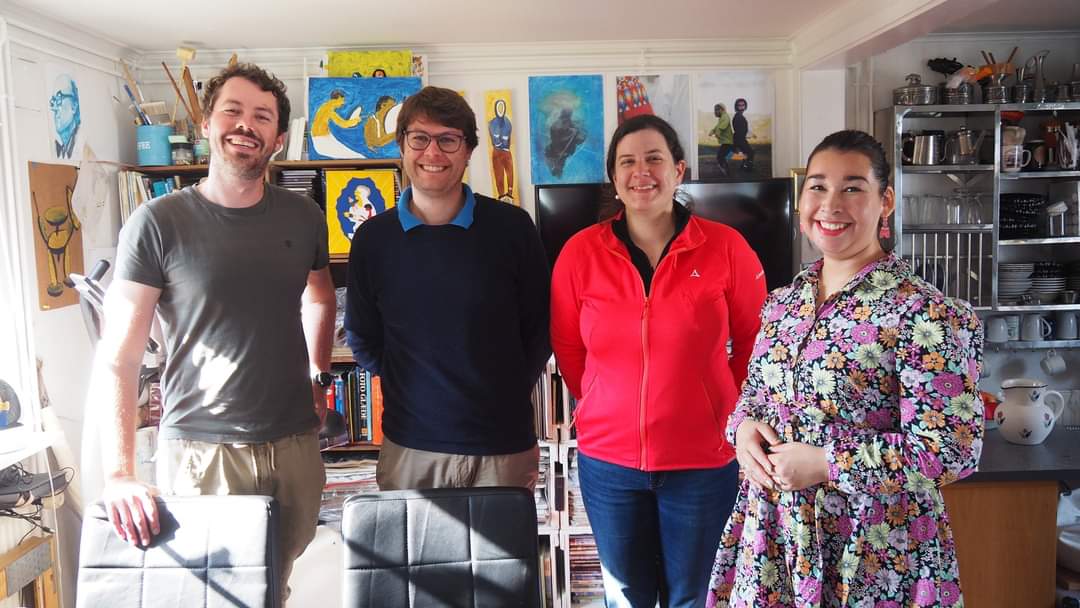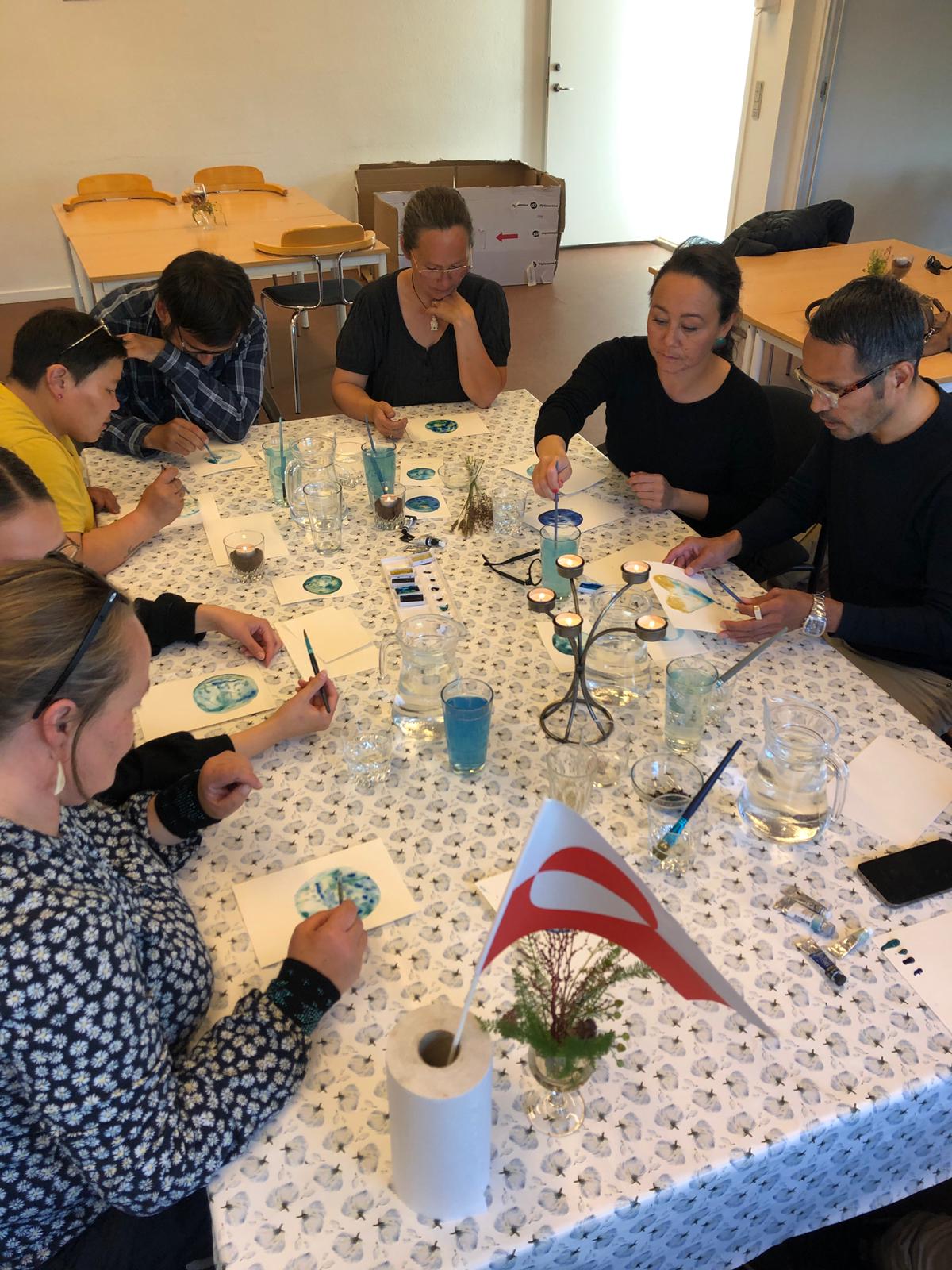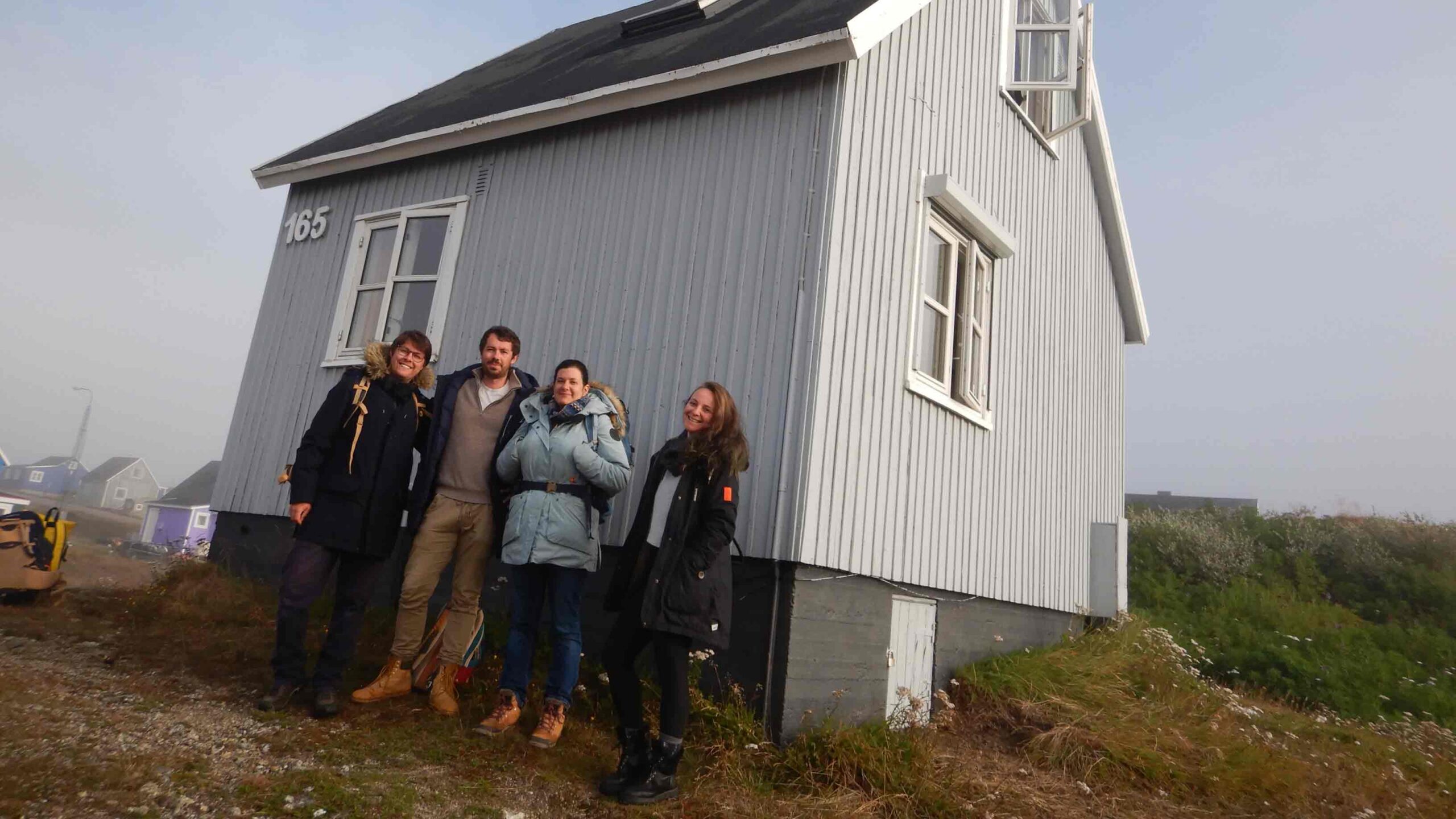While visiting Qaqortoq, the French researchers Jules Danto(left), Anatole Danto, and Léa Pertel met with their local guide, Sofia Mølgaard.
Is Greenlandic culture similar to the culture on two French islands?
This French researcher has traveled around South Greenland to investigate – and has found similarities in people’s relation to the sea.
By Ole Ellekrog
Near the Canadian island of Newfoundland lies two French islands called Saint Pierre and Miquelon. The two small islands, the last remnants of a time when all of Canada belonged to France, are easy to overlook. The 6000 people who live there are mainly fishermen and are descendants of French people, who have migrated there through the last 300 to 400 years.
Saint Pierre and Miquelon are located more than 1500 kilometers south of Greenland, so you would not think that the three islands have much in common. But the French islands still lie so far north that icebergs can be seen in its fiords and its climate is categorized as subarctic. As a result, there are more similarities than it first appears. So many, in fact, that the French researcher Anatole Danto has started an anthropological project that will compare them.

“Our most important goal with this project is to show these two societies that they share the same coastal and marine environments, and that they have many, perhaps unknown, links. Many customs in Greenland are similar to the ones on the French archipelago,” says Anatole Danto, anthropologist and researcher of intangible cultural heritage at the Panthéon-Sorbonne University in Paris.
“It is also about being quiet by the sea and about having personal experiences with the sea,” Anatole Danto.
To be quiet by the sea
Unlike Greenland, the two French islands have changed ownership between different colonial powers through its history, and for some periods have been completely uninhabited. Historically, there has never been any permanent Inuit culture on the islands, only nomadic Inuit cultures set foot there. Regardless, there are many similarities between the two places, the French researcher asserts.
“Since both of the populations are very isolated and have had to find their own food, the two cultures have developed in similar ways. In both cultures there is a big focus on fishing, hunting and on having access to the sea. Those are not things that the French settlers have been used to at all so it is interesting to see these kinds of connections,” says Anatole Danto.

In Narsaq, the team arranged a watercolor workshop managed by the French artist Candice.
But it is not just the hunting practices that are alike. There are also more intangible similarities.
“Both cultures have some obvious spiritual connections to the sea. The sea has a large presence, and it is not only about fishing. It is also about being quiet by the sea and about having personal experiences with the sea,” says Anatole Danto.
Different colonial histories
Anatole Danto researches so-called intangible cultural heritage which is cultural heritage that does not take a physical shape. In 2021, Greenland had its Inuit drum dancing and singing included on UNESCO’s list of Intangible Cultural Heritage. And even though Anatole Danto was not involved in that event, on the French mainland he has worked on a number of intangible cultural heritage projects that have been included on the national French list.
Last September, while doing research for his comparison project, Anatole Danto and two other French researchers visited several towns in South Greenland, including Qaqortoq and Narsaq. Here, they arranged a watercolor workshop with an artist, visited museums, made observations of the local population, and performed ethnographic interviews with them. All in an effort to learn more about the locals’ connections to the sea.

The project team in front of the Narsaq International Research Station. It consisted of Anatole Danto (far left), Jules Danto, Léa Pertel, and artist Candice Quédec.
And in their research, they also found clear differences between Saint Pierre and Miquelon, and Greenland.
”Obviously, the whole colonial history is different, and therefore also the connections to the Danish and French mainland. On the French islands, there are only descendants of colonists and that, of course, does something to the culture,” says Anatole Danto.
Current connections and maybe more
Although most people in Greenland probably do not know much about Saint Pierre and Miquelon, there already exist a few connections between the places today. Many of those connections are at a government level and involve, among other things, research projects like the one Anatole Danto is conducting.
But the local populations sometimes also meet each other.
“There are concrete connections between fishermen who fish in the same seas. They catch the same fish, the same whales, and the same seals. Many of these connections are unknown to most people,” he says.
Anatole Danto is hoping that his research can be used to create even more concrete connections between the islands than today.